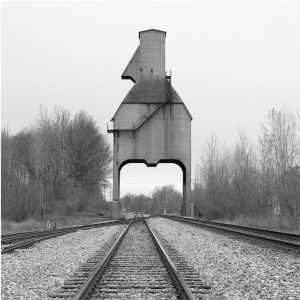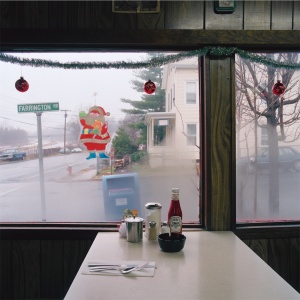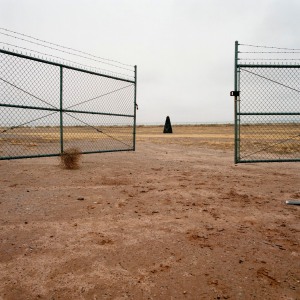
1-40, Tennessee, 1997, 18″ x 18″
archival pigment print from the series:
Approaching Nowhere
© Jeff Brouws
In the late 1990s, photographer Jeff Brouws had a gallery in Santa Barbara called BIG. As Jeff describes it: “Big. Two small rooms devoted to art that doesn’t fit.” The gallery was a gold mine for Santa Barbara—work was shown by artists Michael Blaha, Lucy Brown, Colin Gray, Ed Gregory, Philip Koplin, Keith Puccinelli, Bob Marks, Guy Williams, and Jacqueline Woods (just some of them).
I was wondering recently, what’s happened to Jeff? As it turns out, Jeff has been up to a lot. Before you read this, check out his web site. Next go to the Craig Krull Gallery website featuring his work. That will tell you the most of it. If you come back to this page, you’ll know what I am talking about.
Much of life is so common to us that we don’t pay attention to it. Well, as historians know, the mundane tells everything about who we are. The particulars of it are the grit of our life experience. What Alex “Sandy” Pentland, Director the M.I.T. Human Dynamics Lab says about our digital footprints, applies here as well, “As we go about our daily lives, we leave behind virtual bread crumbs…these bread crumbs tell a more accurate story of our lives than anything we choose to reveal about ourselves.”* As Jeff photographs the blue highways littered with diners, funky motels, gas stations, or remnants of such, his camera shows a society spurred by the gas-fueled engine, experiencing a boon, and then it takes a dive.
Jeff also has explored the Trinity Site, in White Sands, New Mexico,where the first nuclear device was tested as advance work for the two bombs dropped on Japan in 1945, and in the process of that testing, exposed all of us to nuclear fallout. As a daughter of an engineer at the Hanford Nuclear Reservation (Hanford produced the plutonium that rode in the bomb called the Fat Man that was dropped over Nagasaki), I know a little about this—my sister died of leukemia and we met the Men-in-Black.
These are just two series; there is so much more. I encourage you to explore Jeff’s work. He shows us the stuff dreams are made of—the drive to succeed, and to make better. And at the same time, his photographs can speak of an existential loneliness, a feeling of co-existing inclusion and exclusion, of futility and beauty.
*”The Data Driven Society,” by Alex “Sandy” Pentland, Scientific American, October 2013, p. 80.

Coaling Tower #9, Indiana, 2013, 10″ x 10″, archival pigment print from the series: The Coaling Towers
© Jeff Brouws

